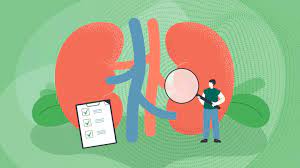Vertigo is a disorienting and often debilitating condition that affects a significant number of individuals worldwide. This article aims to shed light on the various aspects of vertigo, including its symptoms, underlying causes, diagnostic methods, available treatments, and preventive measures.
Understanding Vertigo
Defining Vertigo (H1)
Vertigo is a sensation of spinning or whirling, where an individual feels like they or their surroundings are moving, even when they are stationary. It’s not just a feeling of dizziness; rather, it’s a distinct type of dizziness that can significantly impact one’s quality of life.
Differentiating Vertigo from Dizziness (H2)
While dizziness might refer to a range of sensations, vertigo specifically involves a spinning or rotational sensation. Dizziness might make you feel unsteady or lightheaded, but vertigo creates an illusion of movement.
Symptoms of Vertigo
Identifying Vertigo Symptoms (H2)
Vertigo is often accompanied by a variety of symptoms that can be distressing. Some common symptoms include:
- Spinning Sensation: Feeling like you or the environment around you is spinning.
- Nausea and Vomiting: The intense spinning sensation can trigger nausea and vomiting.
- Sweating: Profuse sweating might occur during a vertigo episode.
- Unsteadiness: Difficulty maintaining balance due to the spinning sensation.
- Tinnitus: Some individuals experience ringing in the ears during an episode.
Causes of Vertigo
Exploring Underlying Causes (H2)
Several factors can lead to vertigo, including:
- Benign Paroxysmal Positional Vertigo (BPPV): Inner ear issues causing dislodged calcium crystals.
- Meniere’s Disease: Inner ear disorder leading to fluid buildup and pressure changes.
- Vestibular Neuritis: Inflammation of the vestibular nerve.
- Labyrinthitis: Inner ear inflammation often caused by viral infections.
- Migraines: Certain types of migraines can trigger vertigo.
- Injury: Head injuries can damage the inner ear or the vestibular nerve.
Diagnosing Vertigo
Seeking a Diagnosis (H2)
Diagnosing vertigo involves:
- Medical History: Providing a comprehensive medical history helps identify potential causes.
- Physical Examination: Evaluating eye movements, balance, and coordination.
- Dix-Hallpike Test: A specific head movement to diagnose BPPV.
- Videonystagmography (VNG): Measures eye movements to pinpoint the cause.
- MRI or CT Scan: Imaging tests rule out other underlying issues.
Treatment Options
Managing Vertigo (H2)
Treatment approaches depend on the underlying cause:
- Epley Maneuver: Repositioning dislodged crystals in BPPV.
- Medications: Anti-nausea and motion sickness medications can help alleviate symptoms.
- Physical Therapy: Exercises to improve balance and reduce symptoms.
- Vestibular Rehabilitation: Specialized therapy for better balance and reduced dizziness.
- Surgery: In extreme cases, surgery might be considered.
Preventive Measures
Reducing Vertigo Episodes (H2)
While not all vertigo can be prevented, some strategies can help:
- Stay Hydrated: Dehydration can worsen symptoms, so staying hydrated is essential.
- Manage Stress: Stress can trigger or exacerbate vertigo; stress management techniques can help.
- Avoid Triggers: Identify and avoid triggers that worsen vertigo, such as certain foods.
- Fall Prevention: Make living spaces safe to prevent falls during vertigo episodes.
Conclusion
In conclusion, vertigo is a challenging condition that can disrupt daily life. Understanding its symptoms, causes, diagnosis, and treatment options is crucial for those affected. By taking appropriate preventive measures and seeking medical guidance, individuals can manage vertigo and lead a better quality of life.








